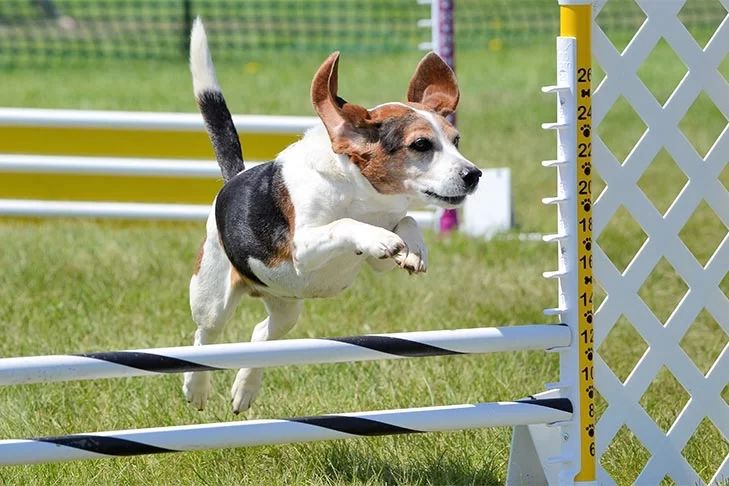Understanding Dog Agility Competitions
Training a dog for agility competitions is one of the most rewarding experiences you can share with your furry friend. As someone who has spent countless hours working with my own dogs, I can tell you that it’s not only a great bonding experience but also a wonderful way to keep your dog physically and mentally stimulated. Dog agility competitions are fast-paced events where dogs navigate a series of obstacles, and the key to success lies in excellent training. In this article, I’ll walk you through how to train your dog for agility competitions, from the basics to more advanced techniques.
The Basics of Dog Agility Training
When I first started training my dog for agility, I didn’t know where to begin. It felt like there was so much to learn, and I didn’t want to overwhelm my dog or myself. But the truth is, the best way to start is with the basics. A solid foundation is crucial, so here’s how to get started:
1. Establish a Bond of Trust
Agility training requires a strong bond between you and your dog. If your dog doesn’t trust you, it will be difficult to get them to focus and follow your instructions. Begin by spending quality time with your dog, engaging in activities that foster trust. This could include playing games like fetch or simply spending time sitting together. Trust is key because agility requires your dog to follow your lead even when they’re faced with distractions.
2. Basic Obedience Training
Before diving into the world of agility training, your dog should have a solid understanding of basic obedience commands such as sit, stay, come, and heel. These commands form the foundation of more complex agility behaviors. I spent a few weeks reinforcing basic obedience with my dog before introducing agility obstacles. It’s essential that your dog listens to you and follows commands, as they’ll need to rely on your cues during the competition.
Introducing Agility Obstacles
Once your dog has mastered basic obedience, it’s time to introduce agility obstacles. These obstacles include jumps, tunnels, weave poles, teeter-totters, and more. At first, the goal is to make the experience fun and engaging for your dog. Here’s how you can begin:
1. Jumps
Start with low jumps, ensuring that they’re easy for your dog to navigate. You can use treats or toys to encourage your dog to jump over the bar. Gradually increase the height as your dog becomes more confident. I found that using a positive reinforcement approach, such as giving my dog a treat every time he successfully completed a jump, made the process smoother.
2. Tunnels
Dogs love tunnels, but it’s important to get them comfortable with this obstacle. Start by luring your dog through a short tunnel with a toy or treat. Gradually lengthen the tunnel as your dog becomes more familiar with it. Patience is key here—if your dog hesitates or gets scared, never force them. Instead, try again later with a positive reinforcement approach. It didn’t take long for my dog to fall in love with tunnels, and now it’s one of his favorite obstacles.
3. Weave Poles
The weave poles are often one of the more challenging obstacles in agility. The key to training weave poles is patience. Start by setting up just two poles and guide your dog through them using treats. As your dog gets the hang of it, slowly add more poles. Don’t rush the process, as it takes time for your dog to develop the right rhythm.
Building Speed and Accuracy
Once your dog is comfortable with the obstacles, the next step is to focus on speed and accuracy. Agility competitions are all about completing the course as quickly and accurately as possible. Here are some techniques I used to help my dog build speed while maintaining precision:
1. Positive Reinforcement
Positive reinforcement is critical in agility training. Whenever my dog completed an obstacle correctly, I made sure to reward him with treats, praise, and affection. This helped him associate the obstacles with positive experiences, which motivated him to do his best. The more you reward your dog for good behavior, the more eager they will be to perform on the course.
2. Practice Sequences
Agility courses consist of multiple obstacles, and your dog must complete them in a specific order. To improve speed and accuracy, practice running through short sequences of obstacles. Start with just a few obstacles and gradually increase the complexity. Timing is key, so try to be as clear and concise with your commands as possible. I often timed myself to gauge how quickly we could complete a sequence, which helped us both stay focused and improve our efficiency.
3. Keep Sessions Short and Fun
Training sessions should be fun and engaging for both you and your dog. If you push your dog too hard, they may become frustrated or lose interest. Keep training sessions short (15-20 minutes) and end on a positive note. I found that my dog performed best when we kept training sessions upbeat and playful. Always remember that training should be a fun experience for both of you.
Preparing for Dog Agility Competitions
Once your dog is consistently performing well on the obstacles, it’s time to prepare for actual competitions. Preparing for an agility trial is an exciting and nerve-wracking experience. Here’s how to get ready:
1. Practice with Distractions
In an actual competition, there will be distractions such as other dogs, people, and sounds. To prepare for this, practice with distractions in your training sessions. This might mean practicing at a dog park or inviting friends to be present during your training. The goal is to get your dog accustomed to performing the obstacles while staying focused on you despite the distractions.
2. Simulate Trial Conditions
It’s a good idea to simulate trial conditions in your practice sessions. Set up an agility course similar to what you’ll encounter in competitions, and time yourself as you and your dog run through it. This will help both of you get a feel for the flow of the competition. Practice running the course multiple times and make note of any areas where you and your dog need improvement.
3. Keep Your Dog in Top Physical Condition
Agility is physically demanding, so it’s important to keep your dog in good shape. Make sure your dog gets plenty of exercise outside of agility training. Running, walking, and playing fetch are great ways to keep your dog fit and agile. Additionally, don’t forget to maintain your dog’s overall health, including regular vet check-ups, vaccinations, and a balanced diet.
Final Thoughts on Dog Agility Training
Training a dog for agility competitions takes time, patience, and consistency, but the rewards are worth it. Watching my dog successfully complete an agility course has been one of the most fulfilling experiences of our training journey. With the right approach and a strong bond of trust, you can help your dog succeed in agility competitions. Whether you’re just starting out or preparing for your first competition, the most important thing is to have fun and enjoy the process together. Good luck!












